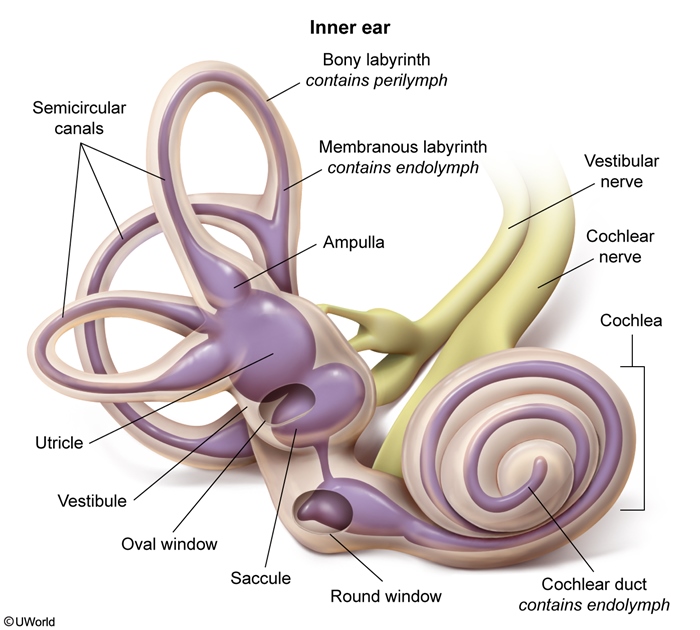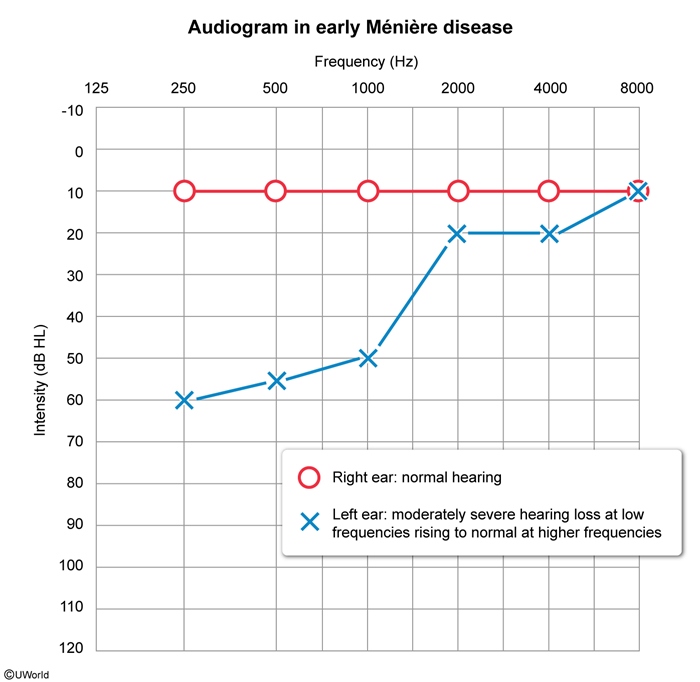Ménière Disease
Article Sections
Introduction
Ménière disease is a chronic inner ear disorder characterized by discrete episodes of severe vertigo, hearing loss, tinnitus, and a sensation of aural fullness. Although episodes initially resolve completely, over time hearing loss progresses and becomes permanent.
Pathophysiology
Ménière disease seems to be caused by increased volume and/or pressure of endolymph in the inner ear (Figure 1) (endolymphatic hydrops), which impacts both the labyrinth (balance) and cochlea (hearing). It is unclear if this arises due to increased production of endolymph, decreased resorption of endolymph, or both.
Ménière disease is thought to have a multifactorial etiology, which may include genetic factors, lifestyle factors (eg, smoking, noise exposure), and potentially infection/autoimmune conditions. Acute episodes have been hypothesized to be triggered by hydraulic pressure fluctuations, membranous labyrinth rupture, ischemia, and/or acute inflammation.
Continue Learning with UWorld
Get the full Ménière Disease article plus rich visuals, real-world cases, and in-depth insights from medical experts, all available through the UWorld Medical Library.
Figures

